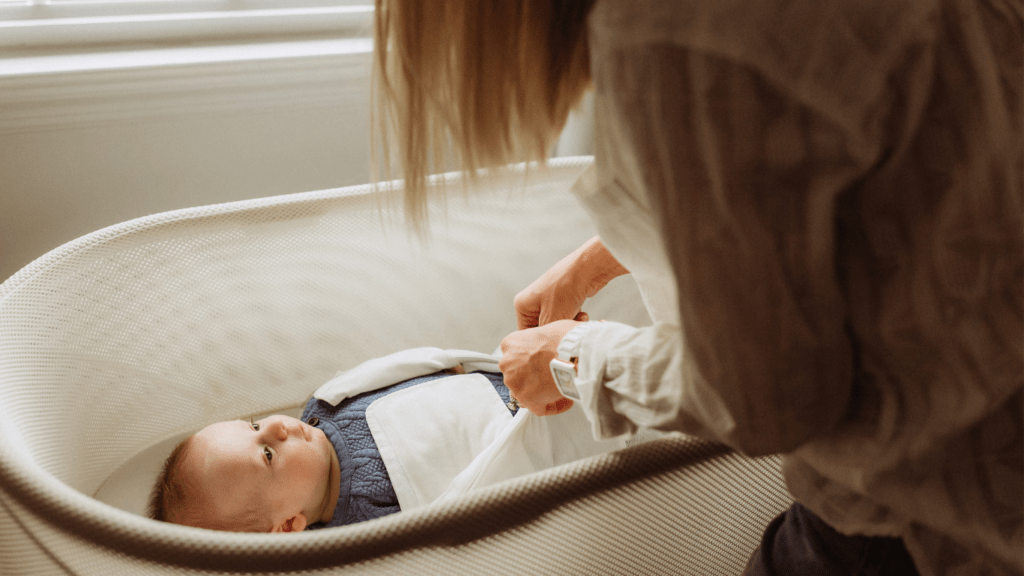Understanding Newborn Skin
Newborn skin is delicate and sensitive, making it prone to various rashes and irritations. The skin of a newborn is much thinner than that of an adult, which means it’s more susceptible to external factors like friction, moisture, and irritants. This sensitivity requires careful attention and gentle care.
Newborns are born with a protective layer called vernix caseosa, a waxy or cheese-like substance that covers and protects the baby’s skin in the womb. This layer is usually washed off during the first few baths. However, it plays an important role in shielding the baby’s skin from infections and irritants initially.
Another notable aspect of newborn skin is its rapid turnover rate. New skin cells replace old ones quickly, leading to peeling and flaking, which is quite common in the first few weeks. This process is normal and doesn’t usually require special treatment, but keeping the skin moisturized can help minimize discomfort.
It’s essential to understand that newborns have an immature immune system. This makes their skin more vulnerable to bacteria and fungi, resulting in common conditions like diaper rash and baby acne. Using mild, fragrance-free products helps reduce the risk of irritation and keeps the skin healthy.
Common issues such as cradle cap, which presents as scaly patches on the baby’s scalp, occur due to the overproduction of oil by the sebaceous glands. These glands are more active in newborns, contributing to various skin conditions. Gently washing the baby’s scalp with a mild shampoo can help manage this condition.
By understanding these characteristics, I can better care for my baby’s skin and address common issues effectively.
Identifying Common Newborn Rashes

Recognizing different types of rashes helps in providing the right care. Below are common newborn rashes and their identifying features.
Erythema Toxicum
Erythema Toxicum affects many newborns during the first few days of life. This rash appears as red spots with tiny, white bumps in the center. It’s generally harmless and clears up by itself within weeks.
Baby Acne
Baby Acne usually shows up on the face, especially the cheeks and forehead, within the first month. It manifests as small red or white bumps and resolves without treatment in a few months. Keeping the skin clean and dry helps manage it.
Diaper Rash
Diaper Rash occurs due to prolonged exposure to moisture, dirty diapers, or friction. It looks like red, inflamed skin in the diaper area. Frequent diaper changes, airing out the skin, and using barrier creams can alleviate symptoms.
Milia
Milia are tiny white bumps commonly seen on the nose, cheeks, or chin. They result from trapped keratin under the skin. These usually disappear on their own within a few weeks without any intervention.
Heat Rash
Heat Rash, or prickly heat, appears as tiny, red bumps often in skin folds or areas where clothing traps sweat. Ensuring a cool, dry environment and dressing the baby in breathable fabrics help in reducing the rash.
Cradle Cap
Cradle Cap features yellow, greasy, scaly patches on the scalp. Mild baby shampoo and gentle brushing can help remove scales. If it persists, consulting a pediatrician might be necessary for further treatment.
By identifying these common rashes, parents can better care for their baby’s delicate skin and ensure prompt and effective treatment.
Causes of Newborn Rashes
Newborn rashes can arise due to various factors rooted in their delicate skin and developing immune system. Identifying these causes helps in managing and treating the rashes effectively.
- Immature Immune System
Newborns have an immature immune system, making them susceptible to infections and skin irritations. Their bodies are still adjusting to the external environment outside the womb, leading to common rashes like erythema toxicum. - Exposure to Irritants
Exposure to irritants such as soaps, detergents, and fragrances can cause skin reactions in newborns. Using products specifically designed for sensitive skin can help minimize these irritations. For example, mild, fragrance-free baby shampoos are preferable. - Heat and Humidity
Heat and humidity can contribute to heat rash, particularly in skin folds where sweat gets trapped. Keeping the baby cool and dry is essential to prevent such rashes. Lightweight clothing and fans can aid in maintaining a comfortable temperature. - Friction and Moisture
Diaper rash often results from friction and prolonged exposure to moisture. Frequent diaper changes and using barrier creams like zinc oxide can help protect the skin. Diapers should be checked every two hours to monitor moisture levels. - Hormonal Changes
Hormonal changes after birth can cause conditions like baby acne. These hormones, passed from mother to baby, can stimulate the sebaceous glands, leading to small bumps primarily on the face. - Blocked Sweat Glands
Blocked sweat glands can cause milia, which appear as tiny white bumps often seen around the nose and cheeks. These usually clear up on their own as the baby’s skin matures and glands open up. - Sebum Overproduction
Overactive sebaceous glands lead to cradle cap, identified by greasy, yellowish scales on the scalp. Gentle washing with mild shampoo can manage this condition effectively.
Understanding these causes allows for better care and precise treatments tailored to the specific type of rash, ensuring the newborn’s comfort and skin health.
Treating Newborn Rashes
Treating newborn rashes involves various approaches, including:
- simple home remedies
- over-the-counter treatments
- knowing when to consult a pediatrician for further guidance
Home Remedies
Home remedies provide a gentle, effective way to treat many newborn rashes. Keeping the affected area clean and dry helps alleviate symptoms. Use lukewarm water and mild, fragrance-free soap during baths. Applying a cool compress to the rash soothes itching and reduces inflammation. Breast milk, known for its natural antibacterial properties, can be applied to baby acne and other minor rashes.
Over-the-Counter Treatments
Over-the-counter treatments can offer relief for persistent or more severe rashes. Diaper rash creams containing zinc oxide protect against moisture. Hydrocortisone creams, available in 0.5% or 1% concentrations, help reduce inflammation and itching. For baby acne, mild benzoyl peroxide may be used, but avoid products with harsh chemicals or fragrances.
When to Consult a Pediatrician
Consult a pediatrician for rashes that don’t improve with home or over-the-counter treatments. Seek medical advice if the rash spreads, causes significant discomfort, or is accompanied by a fever. If blisters, pus, or yellow crusts develop, it might indicate an infection requiring prescription medication. Additionally, any rash that appears suddenly and is severe needs prompt medical evaluation.
Preventing Newborn Rashes
Taking preventive measures helps keep your baby’s skin healthy and rash-free. Focusing on skincare tips, selecting the right products, and managing environmental factors makes a significant difference.
Skincare Tips
Maintaining proper hygiene minimizes the risk of newborn rashes. Bathe your baby in lukewarm water and use a mild, fragrance-free soap to avoid irritation. Pat the skin dry gently instead of rubbing, particularly in areas with skin folds. Apply a gentle, hypoallergenic moisturizer to keep the skin hydrated, especially after a bath. Regular diaper changes and using a barrier cream with zinc oxide can prevent diaper rash.
Choosing the Right Products
Opt for products specifically designed for sensitive newborn skin. Hypoallergenic and fragrance-free options are the safest, reducing the risk of allergic reactions. Avoid talcum powders, as inhalation can harm a newborn. For laundry, choose mild, fragrance-free detergents to wash baby clothes, bedding, and blankets. Test any new product on a small skin patch before wider application to check for adverse reactions.
Environmental Factors
Controlling the environment helps in preventing newborn rashes. Keep the nursery temperature comfortable to avoid overheating, as excessive heat leads to heat rash. Use a humidifier if the air is dry to maintain the skin’s moisture levels. Dress your baby in loose-fitting, breathable clothing made of natural fabrics like cotton to minimize friction and allow air circulation. Ensure the baby’s surroundings are clean and free from potential irritants, including dust, pet dander, and harsh cleaning chemicals.



 David Withers – Senior Parenting Advisor David Withers brings over 15 years of expertise in child development and family dynamics to his role as Senior Parenting Advisor at Makes Parenting Watch. A respected voice in the parenting community, David has worked extensively with families, helping them navigate the complexities of raising children through every phase of life—from infancy to adolescence. His articles are known for their evidence-based approach, offering parents practical, actionable tips on topics such as sleep training, positive discipline, developmental milestones, and fostering emotional resilience in children. In addition to his writing, David conducts workshops and webinars to provide personalized advice to parents dealing with specific challenges. His deep understanding of child psychology and development ensures that Makes Parenting Watch remains a valuable and reliable resource for parents seeking guidance in today’s fast-paced world.
David Withers – Senior Parenting Advisor David Withers brings over 15 years of expertise in child development and family dynamics to his role as Senior Parenting Advisor at Makes Parenting Watch. A respected voice in the parenting community, David has worked extensively with families, helping them navigate the complexities of raising children through every phase of life—from infancy to adolescence. His articles are known for their evidence-based approach, offering parents practical, actionable tips on topics such as sleep training, positive discipline, developmental milestones, and fostering emotional resilience in children. In addition to his writing, David conducts workshops and webinars to provide personalized advice to parents dealing with specific challenges. His deep understanding of child psychology and development ensures that Makes Parenting Watch remains a valuable and reliable resource for parents seeking guidance in today’s fast-paced world.
